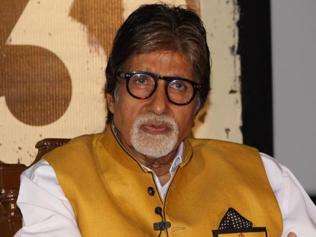October 12, 2013
NEW DELHI: Through a bunch of omissions, Census 2011 appears to seriously underestimate the number of slum dwellers in India, putting it at 6.5 crore people spread over 2613 towns.

October 12, 2013
NEW DELHI: Through a bunch of omissions, Census 2011 appears to seriously underestimate the number of slum dwellers in India, putting it at 6.5 crore people spread over 2613 towns.

But, over 5 crore urban population living in newly emerged urban areas was not covered for slum identification during the census. Although small slum clusters are now more prevalent compared to big sprawls of earlier times, the Census authorities persisted with using the old 60-70 household definition. And, dwellings with roofs or walls of GI sheets were not counted as slum. These and other factors are responsible for the underestimation.
India has an urban population of 37.7 crore living in a total of 7935 towns. Of these towns, 4041 are administered by some local body like a municipality. These are called statutory towns. Slums were counted only in these towns.
The remaining 3894 towns do not yet have a local body. Since they fulfill the criteria of "urban" areas the Census classifies them as "census towns". But strangely, while counting the slum population the Census did not consider these Census Towns at all. This is what the technical advisory committee for Census 2011 decided, explained additional registrar general Deepak Rastogi.
With a population of over 5 crore, and because they are still new settlements, a large number of slum dwellings is likely to be found in these Census Towns. These have been missed out in this Census and hence will be deprived of such policy initiatives like the JNNURM.
In the Census Towns of Damodarpur, Dumari and Majhaulia abutting Muzaffarpur town in Bihar, at least 10 to 20 percent houses have thatch roof, and drains are open, says Abhash Kumar. "Land of these erstwhile villages has been sold for middle class residents but most original residents live in slum like conditions," he added.
On the outskirts of Delhi, Khora is a Census Town in Ghaziabad district where working people live. Its population is 1.9 lakh. Large swathes of this sprawling town are congested with open drains, no piped water and ramshackle houses. Even Greater Noida, an upmarket locality has small clusters of jhuggi-jhopris. Panvel, Navi Mumbai-Raigarh, on the periphery of Mumbai, is similar. But all are out of the reckoning for slum identification.
The census towns are under village panchayats, still get funds from the rural development ministry and state governments are hesitant to turn them into municipalities, says Ram Bhagat, professor at the International Institute of Population Studies, Mumbai.
Pronab Sen, chairman of the National Statistics Commission underlined other flaws in the procedure leading to an "under-count" of slums. In 2010 a committee set up by the ministry of housing and urban poverty alleviation (MHUPA) under his chairmanship had strongly recommended that the cut-off for counting a belt of dwellings as slum should be 20 not 60-70 households. The Sen committee had projected a slum population of over 9 crore by 2011.
"Given the real estate boom and growing urban population, there is no space for huge Dharavi like sprawls in our cities. Poorer people now settle down in whatever small space they find. So, the unit for our measurement should be 20 households, which is the minimum viable number for providing basic services," Sen said.
For a house to qualify as a slum dwelling, the Sen committee had recommended that it"s walls and roof should not be made of reinforced concrete. However the Census 2011 count was done by disqualifying even houses using GI or metal sheets, stones and slate for walls and roof.
The large under-counting of slums may feel good at present but it will create problems in the future. And, people will have to live in unhealthy environs for decades before any respite comes their way. "Slums are an issue for not just urbanization, but urban governance also. We need to identify and respond to them early on," Bhagat told TOI.
Courtesy: TOI







































































































